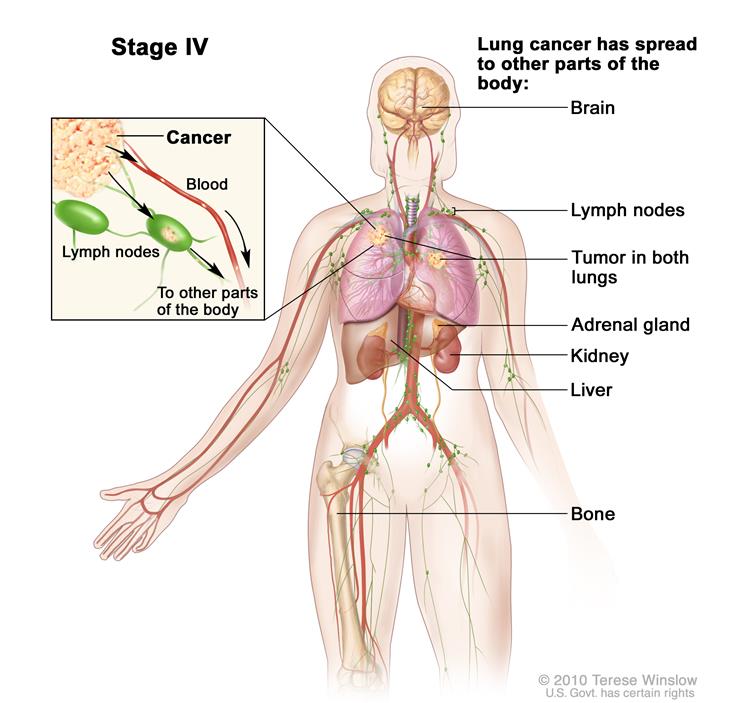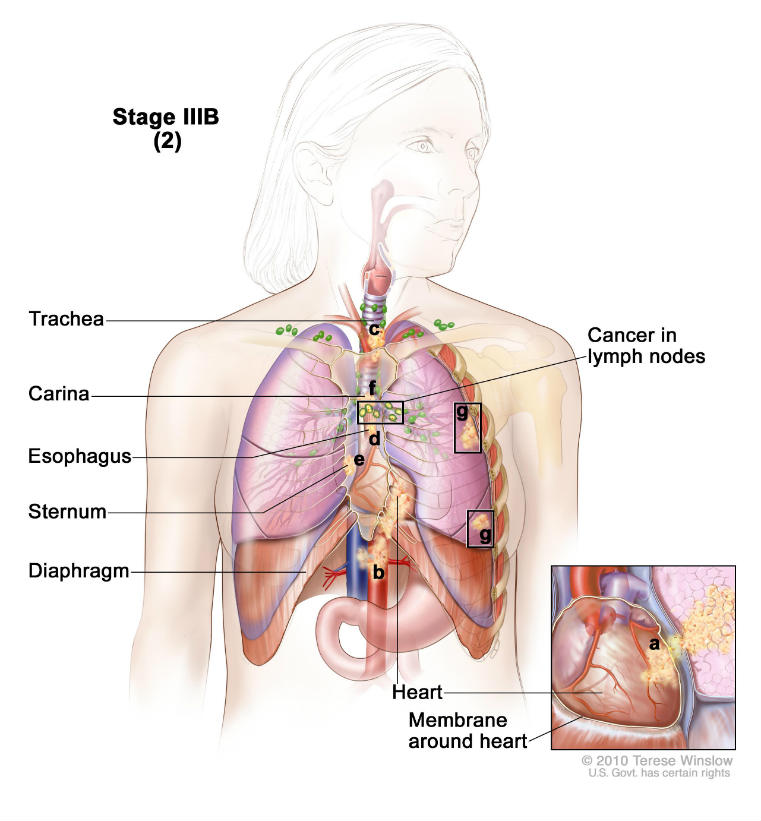Patients also reported difficulty differentiating the side effects of treatment from the symptoms of lung cancer. Patients said they felt encouraged by the availability of novel treatments for lung cancer and also voiced interest in unconventional therapies, such as yoga, acupuncture, support groups, nutritional interventions, and nutritional supplements.

Many patients reported that maintaining an acceptable quality of life was just as important as prolonging life. Lung cancer (See Figure 2.) and its treatment were noted to have significant effects on daily life: a constant round of medical appointments, uncertainty regarding the future, the inability to work, and the stigma of being a sick person.

Patients whose lung cancer was treated with conventional chemotherapy (See Figure 3.) reported debilitating effects and noted issues with chronic pain after surgery. Targeted therapies were reported to have less severe side effects, but patients expressed concerns about the need for long-term treatment and fears of developing resistance to treatment. 
NSCLC is a complex disease that affects multiple aspects of a patient’s life. However, targeted therapies, multidisciplinary treatment, aggressive symptom management, and a focus on individual patients’ desires and goals of care can improve the experience of both patients and physicians.
Further Reading
- Aspirin and nonsteroidal anti-inflammatory drugs can prevent cutaneous squamous cell carcinoma: a systematic review and meta-analysis. Muranushi C, Olsen CM, Pandeya N, Green AC. J Invest Dermatol. 2015;135(4):975-83.
- Prophylactic use of aspirin: systematic review of harms and approaches to mitigation in the general population. Thorat MA, Cuzick J. Eur J Epidemiol. 2015;30(1):5-18.
- [Opioids in chronic noncancer pain-are opioids superior to nonopioid analgesics? A systematic review and meta-analysis of efficacy, tolerability and safety in randomized head-to-head comparisons of opioids versus nonopioid analgesics of at least four week's duration]. Welsch P, Sommer C, Schiltenwolf M, Häuser W. Schmerz. 2015;29(1):85-95.
- American Cancer Society. Side effects of targeted cancer therapy drugs. Revised December 11, 2014. Accessed September 20, 2015.
- Bath C. Lung cancer expert offers recommendations for treating toxicities associated with targeted therapies. The ASCO Post. December 15, 2014. Accessed September 20, 2015.
- Center for Drug Evaluation and Research (CDER) and Center for Biologics Evaluation and Research (CBER), U.S. Food and Drug Administration (FDA). The voice of the patient: a series of reports from the U.S. Food and Drug Administration’s (FDA’s) patient-focused drug development initiative. Lung cancer. Published December 2013. Accessed September 20, 2015.
- Davies M. New modalities of cancer treatment for NSCLC: focus on immunotherapy. Cancer Manag Res. 2014;6:63-75.
- Elice F, Rodeghiero F. Side effects of anti-angiogenic drugs. Thromb Res. 2012;129 Suppl 1:S50-S53.
- Reck M, Heigener DF, Mok T, Soria JC, Rabe KF. Management of non-small-cell lung cancer: recent developments. Lancet. 2013;382(9893):709-719.
- Silva S, Danson S. Targeted therapy and new anticancer drugs in advanced disease. Thorac Surg Clin. 2013;23(3):411-419.
- Simmons CP, Macleod N, Laird BJ. Clinical management of pain in advanced lung cancer. Clin Med Insights Oncol. 2012;6:331-346.
- Simone CB, Jones JA. Palliative care for patients with locally advanced and metastatic non-small cell lung cancer. Ann Palliat Med. 2013;2(4):178-188.
- Sundar R, Soong R, Cho BC, Brahmer JR, Soo RA. Immunotherapy in the treatment of non-small cell lung cancer. Lung Cancer. 2014;85(2):101-109.
